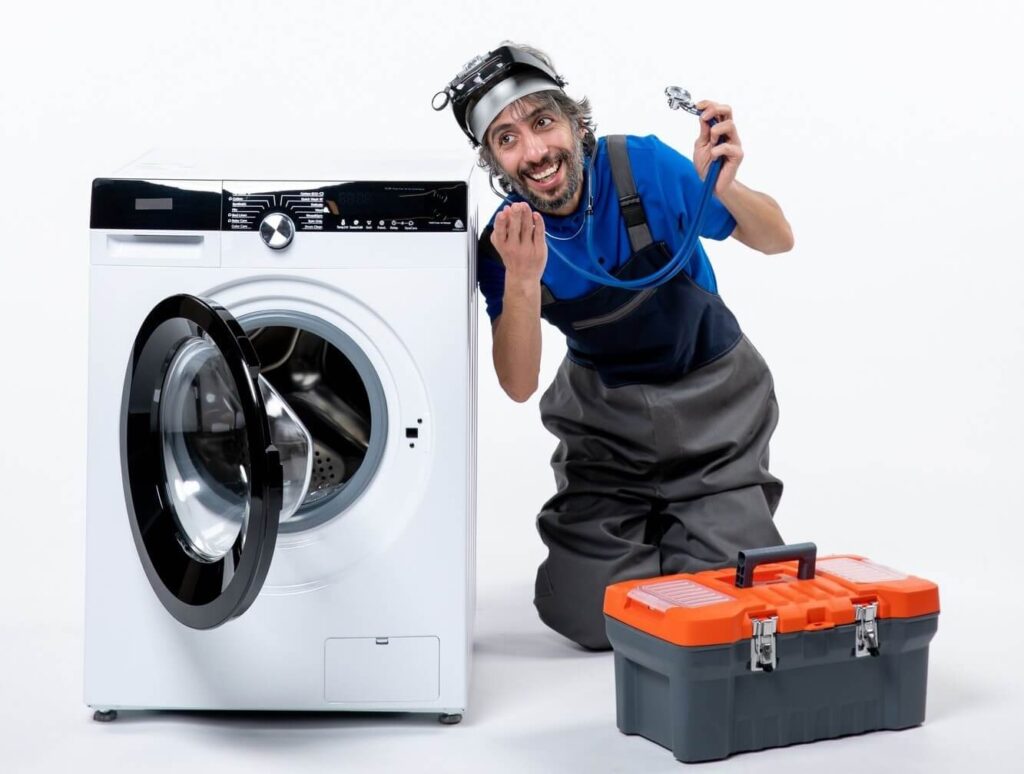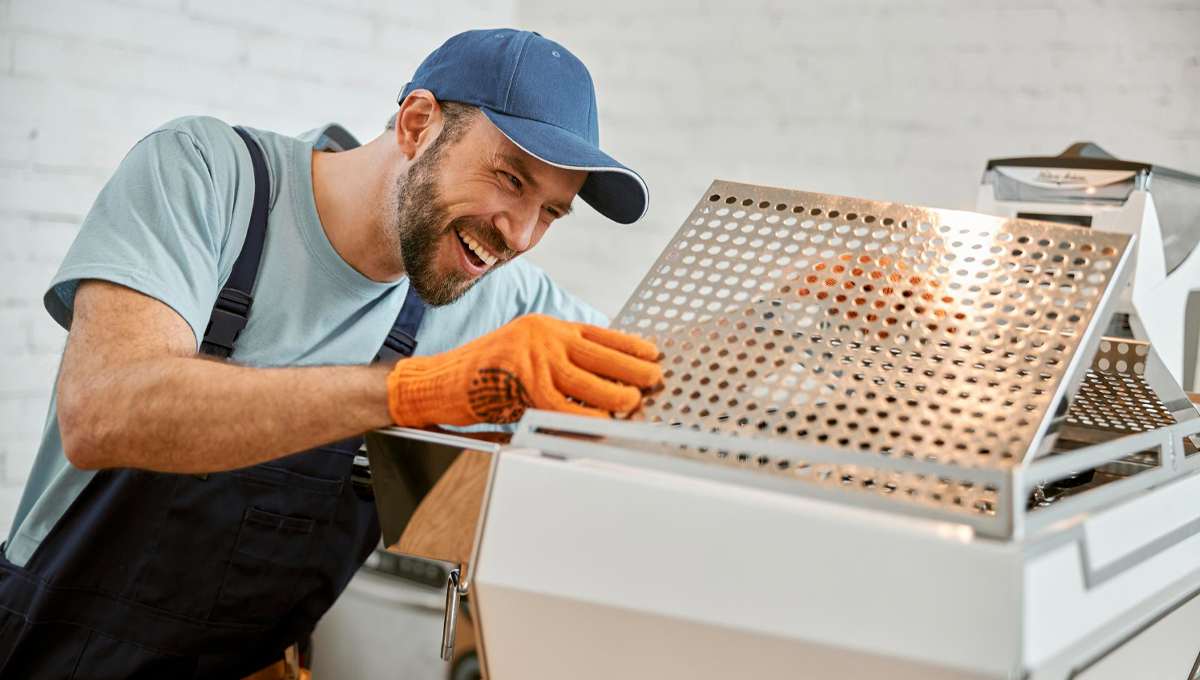When you open your dryer after a full cycle, your clothes are damp. You might be wondering, why is my dryer not drying? This is one of the most common appliance problems homeowners encounter.
Here’s how to diagnose and fix any dryer problem, whether your clothes aren’t drying completely, or it takes forever to dry a load.
You’ll learn everything from simple maintenance tasks to signs you should hire a pro.
Common Reasons Your Dryer is not drying properly
There are a few reasons why your laundry dryer not drying well. We’ll look at the most common causes and how to fix them.
Airflow Restrictions: The #1 Problem
Clogged lint trap
The most common reason a dryer does not dry clothes well is a blocked lint screen. Lint accumulates with every load, causing airflow to be significantly restricted.
Solution: Make sure your lint screen is clean before you dry. Simply remove the lint screen and pull the lint towards you with your fingers. Once you see detergent or fabric softener buildup on the screen, wash it with a nylon brush.
Crushed or kinked vent hose
Make sure you check behind the unit when the dryer not drying clothes, but is hot. A crushed vent hose prevents hot, moist air from escaping, trapping heat inside the drum without properly drying your clothes.
Your vent hose shouldn’t be crushed or pinched. You’ll want a 4-inch diameter metal hose (not aluminum foil or plastic) for maximum airflow.
Clogged exhaust vent
Over time, lint and debris can accumulate in your dryer’s exhaust vent, severely restricting airflow. This could be the reason your dryer doesn’t dry all the way.
Solution: Make sure you clean your dryer vent every year. Typically, this maintenance task takes less than two hours, but it makes a huge difference.
Power and electrical issues
Is Your Dryer Plugged In?
Before diving into complex troubleshooting, check the basics. Unplugged dryers won’t turn on at all.
Solution: Make sure your dryer is plugged in right. You might have moved it recently and it got loose.
Tripped [ Circuit Breaker]
Electric dryers require two circuits to function – one for the heating element and another for the remaining components. Both circuit breakers have to be on for your dryer to work.
Solution: Check your electrical panel for tripped breakers. You can flip it back to “on” if it’s not aligned with the rest.
Incorrect dryer settings and loading
Use the wrong drying cycle
Having trouble drying your clothes? Check what cycle you’re using. You might not be able to dry larger or heavier loads with timed drying.
Solution: Try Auto Dry instead of Timed Dry. The Auto Dry setting senses moisture levels and continues until your clothes are properly dried.
Overloaded Drum
Cramming too many clothes into your dryer restricts air circulation, preventing drying. This might make your dryer take forever to dry.
Solution: Avoid overloading your dryer. A free tumble dryer is the best way to dry clothes. Make sure to dry large loads in batches.
Soak wet clothes
Your clothes won’t dry well when they’re too wet.
Solution: Make sure your washer’s spin cycle works correctly. You should spin your clothes again before you put them in the dryer if they come out dripping wet.
Technical Issues That Require Professional Help
Heating Element Problems
Electric dryers warm the air inside the drum. You might have a problem with your heating element if your dryer gets hot but doesn’t dry.
Signs of a faulty heating element:
- Dryer runs but doesn’t produce heat
- Clothes take a long time to dry
- Dryer stops heating mid-cycle
Thermostat or Sensor Malfunctions
The cycling thermostat senses dampness in the laundry and adjusts the temperature. You may wonder why your washer and dryer not drying when sensors aren’t working right.
Solution: Testing thermostat and sensor components requires technical expertise. Contact a repair professional to diagnose and fix these issues.
Broken Start Switch or Door Latch
Your dryer might not start or stop mid-cycle if the start switch or door latch is broken.
Solution: These components typically need professional replacement. While waiting for service, check that the door closes properly and the start button functions normally.
Maintenance Tips to Prevent Drying Problems
Regular cleaning schedule
You’ll have fewer dryer problems if you keep a routine.
Monthly tasks:
- Deep clean the lint trap
- Check the vent hose for obstructions
- Inspect the exhaust vent for buildup
Yearly tasks:
- Professional vent cleaning service
- Full inspection of dryer components
- Verification of proper venting installation
Benefits of proper maintenance
Regular checks and dryer vent cleaning will:
- Increased airflow
- Decrease drying times
- Reduce energy costs
- Extend the life of your appliance.
Troubleshooting Checklist: Why Is My Dryer Not Drying?
Have you ever wondered why your dryer takes so long to dry? Or why is my dryer not drying clothes?, try these steps:

Check the power supply.
Is the dryer plugged in? Are both circuit breakers on?
Inspect the lint screen:
Remove and clean the lint screen. Check for detergent residue buildup
Examine the vent hose:
Look for kinks or crushing. Ensure proper installation. Verify it’s made of the appropriate material
Clean the exhaust vents:
Remove lint and debris from the external vent. Check for any obstructions along the vent path
Review your drying habits.
Are you overloading the dryer? Are clothes too wet when dried? Are you using the appropriate cycle settings?
Test the dryer’s heating:
Run the dryer for 5-10 minutes. Feel as if it’s producing heat. Make sure the drum spins right
Examine the technical components:
Look for visible damage to accessible parts. Listen for unusual noises during operation
When to Call a Professional?
You can fix many dryer problems yourself, but some need a professional to fix. You should call a technician if:
- You’ve tried all the above steps and your dryer still isn’t drying.
- There’s a smell of burning, noises that seem out of place, or visible damage.
- Your dryer is relatively unused and not performing as expected.
- You’re uncomfortable working with electrical appliances.
It’s easy to diagnose complicated problems with heating elements and sensors if you have a qualified technician.
Read Also: Bosch dishwasher no lights on control panel? 5 easy hacks to fix it now.
Is It Time to Replace Your Dryer?

You can get a lot of use out of dryers if you keep them clean. A dryer that’s older and still having problems might need to be replaced.
Your dryer might need to be replaced if:
- It would cost more to fix than to replace.
- Your dryer is over 10-15 years old.
- You’ve had multiple major repairs in the recent years.
- Your energy bills have increased significantly.
These dryers offer improved energy efficiency and features that make laundry days more convenient and cost-effective in the long run.
Read Also: Samsung dryer cooling light stays on No heat? 5 Easy Ways to Fix
Conclusion
Your clothes won’t dry if your dryer doesn’t. The most common problem is lint buildup, vent restrictions, or improper settings. Find out why your dryer not drying your clothes all the way with this guide.
Regular maintenance will prevent future problems. Every time you load the dryer, clean the lint screen, check the vent hose, and schedule professional vent cleaning once a year.
You should call a pro if you’re having trouble. A service call can restore the functionality of your dryer and prevent safety hazards.
You’ll get years of reliable service out of your dryer with proper care and attention.








